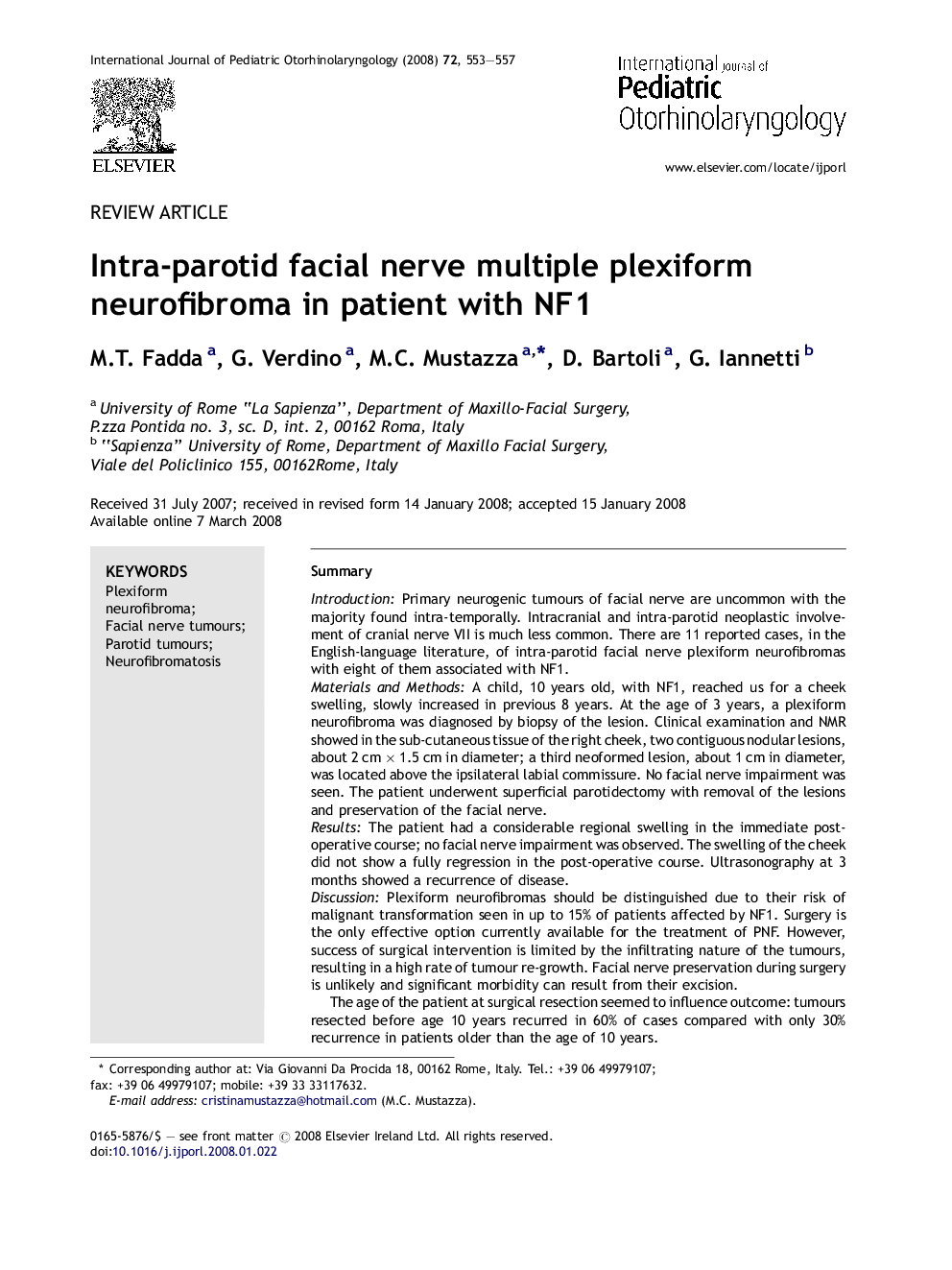| Article ID | Journal | Published Year | Pages | File Type |
|---|---|---|---|---|
| 4114616 | International Journal of Pediatric Otorhinolaryngology | 2008 | 5 Pages |
SummaryIntroductionPrimary neurogenic tumours of facial nerve are uncommon with the majority found intra-temporally. Intracranial and intra-parotid neoplastic involvement of cranial nerve VII is much less common. There are 11 reported cases, in the English-language literature, of intra-parotid facial nerve plexiform neurofibromas with eight of them associated with NF1.Materials and MethodsA child, 10 years old, with NF1, reached us for a cheek swelling, slowly increased in previous 8 years. At the age of 3 years, a plexiform neurofibroma was diagnosed by biopsy of the lesion. Clinical examination and NMR showed in the sub-cutaneous tissue of the right cheek, two contiguous nodular lesions, about 2 cm × 1.5 cm in diameter; a third neoformed lesion, about 1 cm in diameter, was located above the ipsilateral labial commissure. No facial nerve impairment was seen. The patient underwent superficial parotidectomy with removal of the lesions and preservation of the facial nerve.ResultsThe patient had a considerable regional swelling in the immediate post-operative course; no facial nerve impairment was observed. The swelling of the cheek did not show a fully regression in the post-operative course. Ultrasonography at 3 months showed a recurrence of disease.DiscussionPlexiform neurofibromas should be distinguished due to their risk of malignant transformation seen in up to 15% of patients affected by NF1. Surgery is the only effective option currently available for the treatment of PNF. However, success of surgical intervention is limited by the infiltrating nature of the tumours, resulting in a high rate of tumour re-growth. Facial nerve preservation during surgery is unlikely and significant morbidity can result from their excision.The age of the patient at surgical resection seemed to influence outcome: tumours resected before age 10 years recurred in 60% of cases compared with only 30% recurrence in patients older than the age of 10 years.ConclusionIndication and timing of surgery, in paediatrics patients with NF1, are complex. To avoid eventual physical and psychological consequences, it seems prudent to delay surgery as long as it is feasible for otherwise asymptomatic paediatric patients with facial plexiform neurofibroma.
